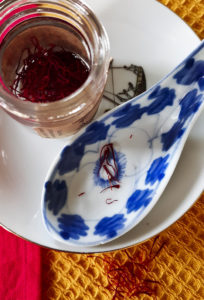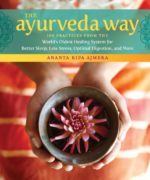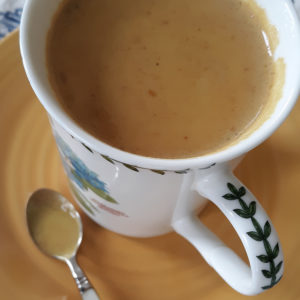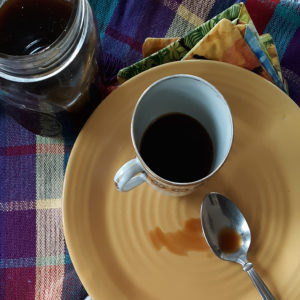Saffron is a spice for your soul. And it’s one of the more unusual spices, being tiny and brittle and powerfully mysterious in taste. The spice is not a bark, leaf or seed, but the stamen, or threadlike parts at the center of a particular crocus flower.

Saffron, “the world’s most costly”, isn’t my everyday spice. But if I ate Saffron ice cream daily, I’d feel carefree and light, as it can induce giggles and laughter. That’s one effect this spice can have on you! Saffron possesses such properties, though it grows from the center of a flower only inches high.
I’ve enjoyed chais with strongly spiced tea taste—the spices are blended to arrive at a rich tea taste, regularly called “Masala Chai”. Some say that saffron strongly influences the rich tea flavor and I agree. And because the spice is native from the Mediterranean area to Iran, its original use in teas may have been in those regions. Yet you can purchase ready-made mixes of Indian saffron chai.
Comparing recipes from Ana Sortun and Ananta Ripa Ajmera that added this spice to their mixture, I found one with a robust, melded taste, an unusual synergy of all its ingredients.
 One of the recipes for spiced milk I found in The Ayurveda Way, a lifestyle guide and cookbook by Ananta Ripa Ajmera, reviewed here.
One of the recipes for spiced milk I found in The Ayurveda Way, a lifestyle guide and cookbook by Ananta Ripa Ajmera, reviewed here.


I’d love to hear whether you’ve made chai and how you like the results. Please add your comments to facebook or instagram, if you’d like.
Follow


